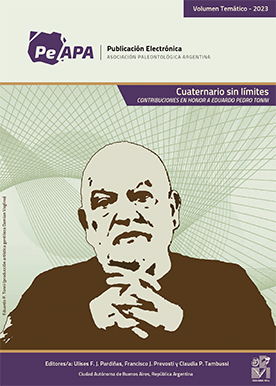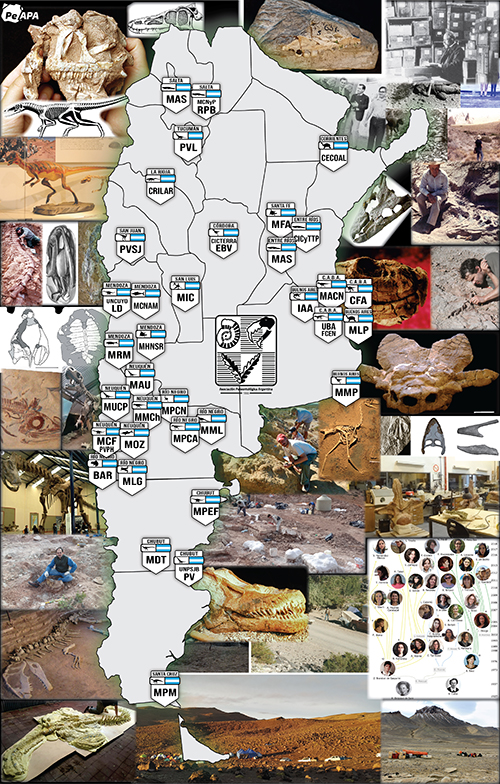BIOGEOGRAPHIC HISTORIES AND CHRONOLOGIES OF DERIVED IGUANODONTIANS
Resumen
The geographic distributions, chronology, and phylogenetic relationships of derived iguanodontians describe a biogeographic history of active intercontinental dispersal, which is tested via comparison with eustatic sea level fluctuations. A revised phylogeny of derived iguanodontians does not support a monophyletic Iguanodontidae, and produces a lineage culminating Hadrosauridae that is first recorded in the early Late Cretaceous of both Asia and North America. This distribution suggests dispersal between Asia and North America during the Late Cretaceous. Biogeographic hypotheses describing isolation of North America during the Early Cretaceous are not supported by sea level data. Dispersal patterns among Late Cretaceous taxa are corroborated by short term regressive phases in sea levels, but no distinction can be made between hypotheses of dispersal in both directions, and repeated immigration of Asian taxa into North America.
KEY WORDS. Cretaceous. Biogeography. Dispersal. Sea levels. Iguanodontia. Hadrosauridae.
Descargas
Publicado
Número
Sección
Licencia

Los/las autores/as conservan los derechos de autor/a y garantizan a la revista el derecho de ser la primera publicación del trabajo licenciado bajo una licencia CC Attribution-NonCommercial 4.0 que permite a otros/as compartir el trabajo con el reconocimiento de la autoría y de la publicación inicial en esta revista.






















